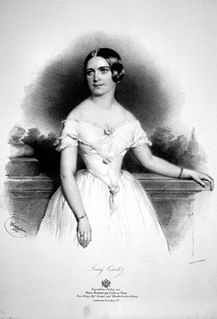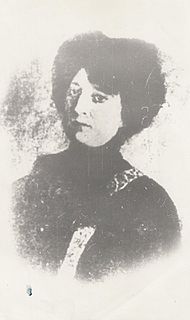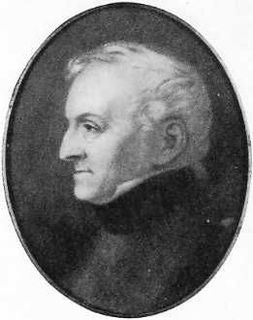 W
WTeresa Landucci Bandettini was an Italian dancer, composer of extemporaneous verse, and poet, who is remembered as the Figurante Poetesca.
 W
WCarlo Blasis was an Italian dancer, choreographer and dance theoretician born in Naples. He is well known for his very rigorous dance classes, sometimes lasting four hours long. He danced in France, Italy, London and Russia. Blasis insisted that his students learn theories and definitions of dance steps. He trained all of Enrico Cecchetti's teachers and it is thought that Blasis's influence in his training is what led Cecchetti to create the Cecchetti method of ballet.
 W
WGiuseppina Bozzacchi was an Italian ballerina, noted for creating the role of Swanhilda in Léo Delibes' ballet Coppélia at the age of 16 while dancing for the Paris Opera Ballet.
 W
WCarlotta Brianza (1867–1930) was an Italian prima ballerina, dancing with La Scala in Milan and later with the Mariinsky Theatre in Saint Petersburg.
 W
WAmalia Brugnoli (1802–1892) was an Italian ballerina. Brugnoli is said to have been the first dancer to have used the pointe technique when in 1823 she performed on full pointe in Armand Vestris' La Fée et le Chevalier in Vienna.
 W
WEnrico Cecchetti was an Italian ballet dancer, mime, and founder of the Cecchetti method. The son of two dancers from Civitanova Marche, he was born in the costuming room of the Teatro Tordinona in Rome. After an illustrious career as a dancer in Europe, he went to dance for the Imperial Ballet in St. Petersburg, Russia, where he further honed his skills. Cecchetti was praised for his agility and strength in his performances, as well as his technical abilities in dance. By 1888, he was widely accepted as the greatest ballet virtuoso in the world.
 W
WFrancesca "Fanny" Cerrito was an Italian ballet dancer and choreographer. She was a ballerina noted for the brilliance, strength, and vivacity of her dancing. She was also one of few women in the 19th century to be recognized for her talent as a choreographer.
 W
WAntonio Cortesi was an Italian ballet dancer, choreographer, and composer. He was particularly known for the numerous ballets which he created and choreographed in the first half of the 19th Century for major Italian theatres, including La Scala, La Fenice, and the Teatro Regio in Turin.
 W
WAntonietta Dell'Era was an Italian prima ballerina best known for originating the role of the Sugar Plum Fairy in Tchaikovsky's ballet, The Nutcracker (1892).
 W
WFlora Fabbri was a 19th-century Italian ballet dancer. She was trained by Carlo Blasis, and was one of his 'Les Pleiades', being the first among those to become internationally famous. Fabbri danced to acclaim in Italy and Paris, before her London debut at Drury Lane Theatre in 1845, dancing as Mazourka in the ballet The Devil to Pay.
 W
WSofia Fuoco — Italian ballerina. Was born as Maria Brambilla; her stage name, Fuoco means ″Fire″ in Italian.
 W
WGiovanni Galzerani was an Italian choreographer, ballet dancer, and composer who was active in major theatres throughout Italy from 1808 to 1853. He was born in Porto Azzurro on the Isle of Elba and began his education in Gaeta where his father was the military commandant at the time. At his father's wish he enrolled in the Collegio della Nunziatella in Naples to train for a military career, remaining there until the age of 17. While at the college, he also studied ballroom dancing with Ferdinando Gioia, the brother of the celebrated dancer and choreographer Gaetano Gioia, and became one of his best pupils. After his father's death in 1806, Galzerani abandoned preparations for a military career and dedicated himself entirely to the ballet, first as a dancer and then as a choreographer. He also composed the music for some of his ballets, such as Il pericolo which premiered in 1818 at the Teatro Regio in Turin.
 W
WCarlotta Grisi was an Italian ballet dancer. Born in Visinada, Istria, she was trained at the ballet school of Teatro alla Scala in Milan and later with dancer/balletmaster Jules Perrot. She was especially noted for her performance in the classic role of "Giselle".
 W
WGiuseppina Antonia "Josephine" Morlacchi Omohundro was an Italian American ballerina, dancer, and actress who introduced the can-can to the American stage.
 W
WMaria I. Perini was an Italian ballet teacher. In 1916, she opened the first private ballet studio in the Tbilisi State Academy of Arts and went on to teach many of the famous Georgian dancers including Dimitri and Irina Aleksidze, Maria Bauer, Soliko Virsaladze, Nino Ramishvili, Iliko Sukhishvili, Vakhtang Chabukiani, Elene Chikvaidze, Maria Kazinets, and Elene Gvaramadze. Her methods of teaching classical dance laid solid foundations for developing Georgian ballet. She was married to the Polish-Georgian artist Henryk Hryniewski.
 W
WRita Sangalli was an Italian ballet dancer. Born in Antegnate, she danced in the Italian provinces of Asti, Piacenza, and Turin, making her 1865 debut at Milan's La Scala in Paul Taglioni's (1808-1884) Flik and Flok, before being hired for the opera at Her Majesty's Theatre in London. In 1872, she danced the principal role in La source at its successful revival. In the same year, she joined the Paris Opera Ballet, where she performed in numerous premieres, including in the role of Sylvia, Yedda (1879), and Namouna. She retired from the company in 1884. Sangalli toured America where she performed in The Black Crook and Flick Flock. In August 1901, Sangali and Marie Bonfanti performed at the Metropolitan Opera House, during the inaugural season of ballet at the New York City venue. She died in Carpesino d'Arcellasco, Italy.
 W
WFilippo Taglioni was an Italian dancer and choreographer and personal teacher to his own daughter, Romantic ballerina Marie Taglioni. Also, although August Bournonville's version is better known, it was Taglioni who was the original choreographer of La Sylphide, in 1832.
 W
WMarie Taglioni, Comtesse de Voisins was an Italian ballet dancer of the Romantic ballet era, a central figure in the history of European dance. She was one of the most celebrated ballerinas of the romantic ballet, which was cultivated primarily at Her Majesty's Theatre in London and at the Théâtre de l'Académie Royale de Musique of the Paris Opera Ballet. She is credited with being the first ballerina to truly dance en pointe.
 W
WFederico Nadi Terrade (1740-1824) was an Italian ballet dancer. He was a ballet master of the Royal Swedish Ballet on the Royal Swedish Opera in Stockholm from 1804 to 1806.
 W
WOdette Valery, née Helene Vasilardi, (1883–?) was an Italian dancer of Greek parentage. She made her début at La Scala in 1898 at the age of fifteen. She moved to Paris where she danced with the Ballet Excelsior at the Folies Bergère. She came to regard dancing en pointe as "old-fashioned" and made her name doing reconstructions of ancient Greek dances in bare feet. Later she portrayed Cleopatra and did an Egyptian dance with a live asp. She was well-educated and spoke French, German, Italian, Spanish and Russian as well as some English and she played the piano well. In 1908, she caused a sensation in New York when she danced in the last act of Samson and Delilah at the Manhattan Opera House where she had been engaged by Oscar Hammerstein I. Her dance included the participation of one of three snakes which were cared for by their own groom, Robert, whom she had engaged in addition to other servants who travelled with her. In 1910 she was earning $1000 a week when dancing in the Teatro Comunale di Bologna. She owned several automobiles and amassed a fortune in jewellery. She spent lavishly and by 1912, she was destitute. Her money ran out when she had to have an operation and as a result she could not work for an extended period. Although her weekly salary was what a workman earned in a year at the time, she hadn't saved a penny. She was found ill and starving in a cheap boarding house in Notting Hill, London where she was being cared for by her seven-year-old son Gaeton. She had been surviving thus for a year by pawning her jewellery. She was found by a friend who was performing at Hammerstein's London Opera House. The friend took her in and was planning to send her back to her home in France to recover. She returned to Paris and although she was reputed to have had twenty-eight love affairs in one year at the height of her fame, she had few real friends and continued to live in poverty. It was a California heiress, Mrs. Jackson Gouraud, who came to her aid on reading about her plight and gave a fund-raising ball in her honour at Martin's, New York. The hostess wore a live python around her neck for the event.